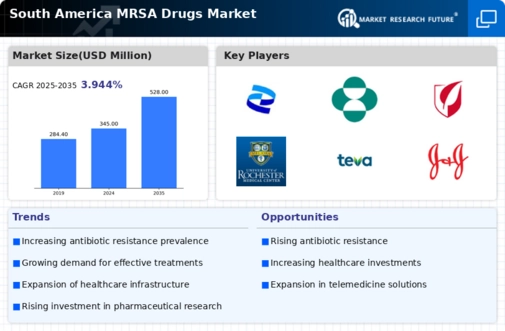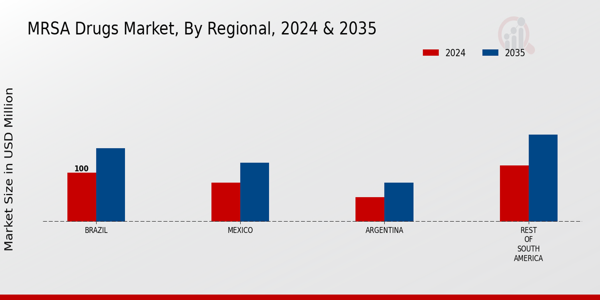The South America MRSA Drugs Market is characterized by a competitive landscape driven by the increasing prevalence of Methicillin-resistant Staphylococcus aureus infections in the region. As healthcare systems strengthen their focus on combating antibiotic resistance, several pharmaceutical companies are vying for a share of this critical market. The demand for effective MRSA treatments has risen, prompting players to innovate and develop new drug formulations, while also enhancing distribution channels to ensure wider accessibility.
The competitive dynamics involve a blend of established industry leaders and emerging biotech firms, each working towards achieving a solid foothold in this lucrative segment by leveraging research capabilities and fostering strategic partnerships. Additionally, regulatory challenges and local healthcare policies play significant roles in shaping the competitive strategies adopted by these companies.
GlaxoSmithKline has established itself as a significant contender in the South America MRSA Drugs Market through its commitment to developing innovative antibiotic therapies. The company possesses a robust portfolio of products aimed specifically at treating antibiotic-resistant infections, positioning itself favorably within the healthcare ecosystem of the region. GlaxoSmithKline’s strengths lie in its substantial investment in research and development, enabling the company to stay ahead of structural trends and evolving bacterial resistance patterns.
Moreover, the company's effective collaboration with local healthcare authorities and institutions has facilitated the efficient distribution of its MRSA-related treatments, enhancing its market presence. The organization's brand reputation and comprehensive approach to addressing public health challenges further solidify its competitive stance in this evolving market landscape.
Amgen has also carved out a significant position in the South America MRSA Drugs Market, focusing on developing therapies that target resistant bacteria. The company's innovative research in monoclonal antibodies and biologics emphasizes the development of differentiated treatment options for MRSA infections. Amgen’s strengths come from its extensive pipeline of products, alongside a commitment to establishing strategic alliances that enhance its distribution capabilities across South America.
The company has actively pursued mergers and acquisitions to bolster its research expertise and expand its market access, allowing it to respond swiftly to the rising demand for effective MRSA therapies. With a focus on providing high-quality medications and maintaining regulatory compliance, Amgen continues to strengthen its presence in the South American market, ensuring it remains competitive amidst ongoing challenges related to antibiotic resistance.















